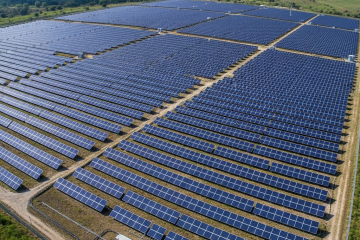
For many users, the choice between “saving money” (Grid-Tied) and “having backup” (Off-Grid) is difficult. Enter the Hybrid Solar System.
A Hybrid system combines a PV array, a specialized hybrid inverter, a battery bank, and a grid connection. It offers the reliability of an off-grid system with the flexibility of a grid-tied one.
How it works:
1. Normal Operation: The system powers loads and charges batteries using solar. Excess power can be exported to the grid to earn credits (Net Metering).
2. Grid Failure: Unlike a standard grid-tie inverter that shuts down, a hybrid inverter disconnects from the grid but keeps the “critical load” circuit running using battery power. This provides seamless backup.
Applications: Hybrid systems are exploding in popularity in urban areas with frequent power cuts and in industries seeking to reduce Diesel Generator (DG) usage. While they are more complex and expensive than simple grid-tied systems, they offer energy security and the ability to perform “peak shaving”—using battery power during expensive peak-tariff hours.



0 Comments